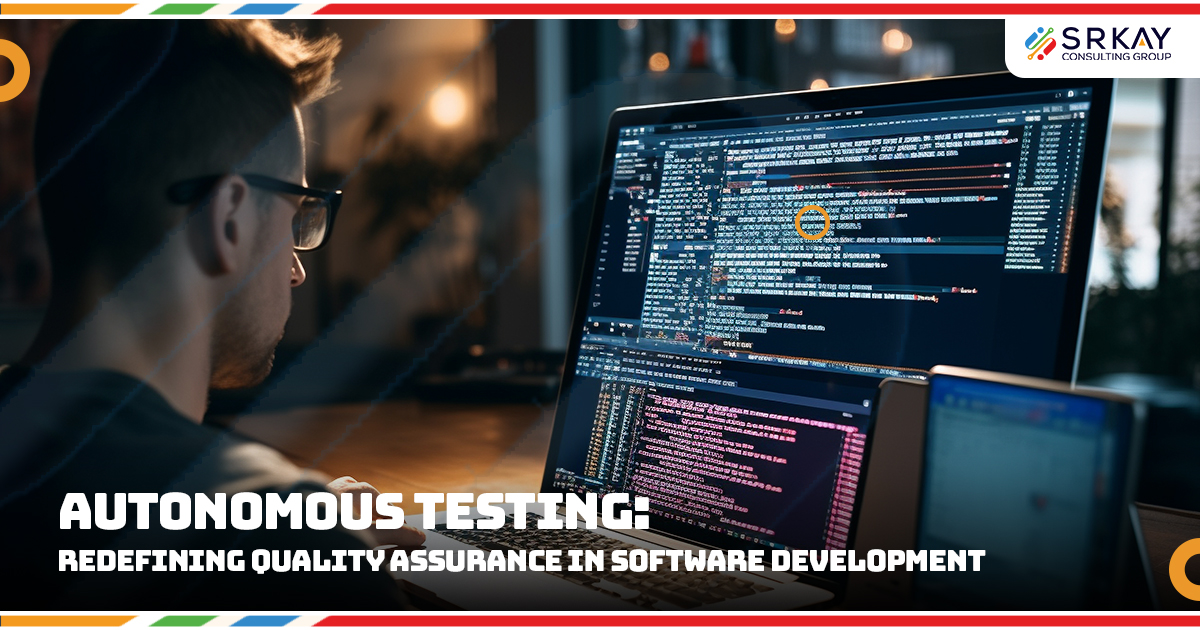Autonomous Testing: Redefining Quality Assurance in Software Development

In the evolving IT landscape, organizations are increasingly adopting digital transformation with a focus on agile practices in software development and testing. This shift has spurred the use of automation tools, significantly boosting Test Automation. Yet, challenges persist, particularly in automated failure analysis and corrective actions. Autonomous software testing marks a key advancement in this domain. It significantly reduces manual intervention and compresses delivery cycles from weeks to hours, streamlining the software development process.
Digital transformation is accelerating at an unprecedented pace, driven by high customer expectations and competition from agile newcomers. This rapid change demands that testing should not be a bottleneck. The future of software testing lies in transitioning from Test Automation to Autonomous Testing. This shift, leveraging AI and ML, aims to make testing a highly efficient part of the DevOps cycle, adjusting to rapid changes. Depending on their current test automation maturity, organizations could see QA cost savings ranging from 30 to 70% by minimizing human intervention in testing. A 2020 Forrester Developer survey indicated that 37% of companies planned to use AI and ML for faster, higher-quality testing. Among these, 61% were using AI/ML to prevent production incidents, and 50% to enhance tester capabilities.
Autonomous Testing, leveraging cutting-edge AI and Machine Learning technologies, transcends the limitations of traditional methods. It’s not just about doing the same tasks faster; it’s about intelligent, dynamic testing processes that evolve and adapt. For CEOs, CTOs, and CXOs steering their companies through the competitive tech landscape, understanding and embracing this shift is not just an option, but a necessity for staying ahead. Autonomous Testing promises a future where software quality is not just assured, but continuously enhanced, driving unparalleled efficiency and product excellence.
The Emergence of Autonomous Testing
The evolution of software testing has been a journey of innovation and adaptation. From the manual testing era, which was characterized by human-centric, laborious processes, we advanced to automated testing – a significant leap that harnessed scripts and tools for efficiency. However, the true revolution in testing emerged with the advent of Autonomous Testing.
This latest phase in testing evolution is powered by Artificial Intelligence (AI) and Machine Learning (ML). These technologies enable testing processes that are not just automated but intelligent. Autonomous Testing systems learn from data, adapt to changes in the software environment, and make decisions with minimal human intervention. This is a stark contrast to traditional methods, where the scope of testing is often limited and heavily reliant on predefined scripts.
Key Differences Between Autonomous and Traditional Testing Methods Include:
Adaptive Learning: Autonomous Testing systems continuously learn and improve, handling unforeseen scenarios with greater accuracy.
Proactive Problem Solving: Unlike traditional methods that follow a reactive approach, autonomous systems proactively identify and address potential issues.
Enhanced Efficiency: By reducing the reliance on manual scripting and intervention, Autonomous Testing accelerates the testing cycle significantly.
This evolution marks a pivotal moment for companies, particularly their leadership, to embrace a more efficient, intelligent, and future-focused approach to quality assurance in software development.
Impact on Quality Assurance
Autonomous Testing significantly enhances the quality assurance process in software development. Its precision in identifying bugs and issues is a leap forward from traditional testing methods, primarily due to its advanced algorithms and data analysis capabilities. This technology excels in uncovering subtle, complex errors that human testers might overlook, thus improving the accuracy of the testing process.
In the realm of agile development, continuous testing is crucial. Autonomous Testing fits seamlessly into this model, providing ongoing, real-time feedback to developers. This continuous loop ensures that issues are identified and addressed promptly, maintaining the momentum of the development cycle.
For complex and large-scale testing scenarios, the benefits of Autonomous Testing are even more pronounced. It can handle vast amounts of data and intricate system interactions more efficiently than manual testing, making it invaluable for large projects with extensive codebases and multifaceted functionalities.
Challenges and Considerations
Implementing Autonomous Testing, however, comes with its own set of challenges. The technological complexity and the cost of initial setup are significant considerations. Organizations must invest in the right tools and infrastructure, and possibly face a steep learning curve.
Moreover, the role of human oversight remains critical. While autonomous systems bring efficiency, the nuanced understanding and decision-making capabilities of human testers are essential to balance automation. This synergy between human expertise and automated efficiency is crucial for optimal testing outcomes.
Future of Autonomous Testing in Software Development
Looking ahead, the trajectory of Autonomous Testing points towards even more sophisticated integration with AI and ML, further enhancing its capabilities. We can anticipate advancements that enable these systems to predict potential issues before they arise, and to integrate more deeply with emerging development methodologies.
The future might also see Autonomous Testing becoming more accessible and user-friendly, enabling a wider range of organizations to benefit from its capabilities. As software development continues to evolve, Autonomous Testing is poised to become an integral, indispensable part of the landscape, driving innovation and efficiency in software quality assurance.




